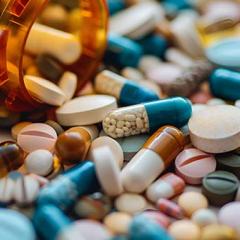Professor Kevin Thomas, Director of the Queensland Alliance for Environmental Health Sciences, talks to the ABC about whether microplastics are actually bad for us.
When we talk about microplastics, there's usually an underlying assumption that they're inherently bad.
But while they are certainly not good for the environment and can cause harm to some animals, we actually don't know enough about what they do in human bodies to know whether or not they're unhealthy for us, environmental health scientist Kevin Thomas says.
"There are such major knowledge gaps that it's really hard at the moment to make a thorough assessment of whether there are any health risks from exposure to microplastics," said Professor Thomas, who is director of the Queensland Alliance for Environmental Health Sciences at The University of Queensland.
He says the tiniest microplastics, around 2.5 microns and smaller, are the ones most likely to do harm.
But because the term "microplastics" lumps everything from 5mm in size down, the data isn't there to know how widespread they are.
We also don't know what these tiny microplastics do inside the body.
Some studies that have looked directly at cells in the lab have found the particles can cause irritation and inflammation in the cells, but Professor Thomas says, "we don't know whether the plastics actually get into those cells in the first place to cause any inflammation-type effects".
Most microplastics probably move through the digestive system and come out in our poo, as earlier studies indicate.
But plastic is not as stable as you might think, and factors such as weathering, sun exposure and oxidising can all make chemical and structural changes that might affect how it interacts with our bodies.
So, just because we don't have the data to show that microplastics cause health problems doesn't mean they're safe; it just means we need to get the data, Professor Thomas says.
"Unless you understand where the plastic is coming from, what size it is, what particular plastic it is, and how it's been formed, it's really hard to understand whether it's going to pose any threat."



